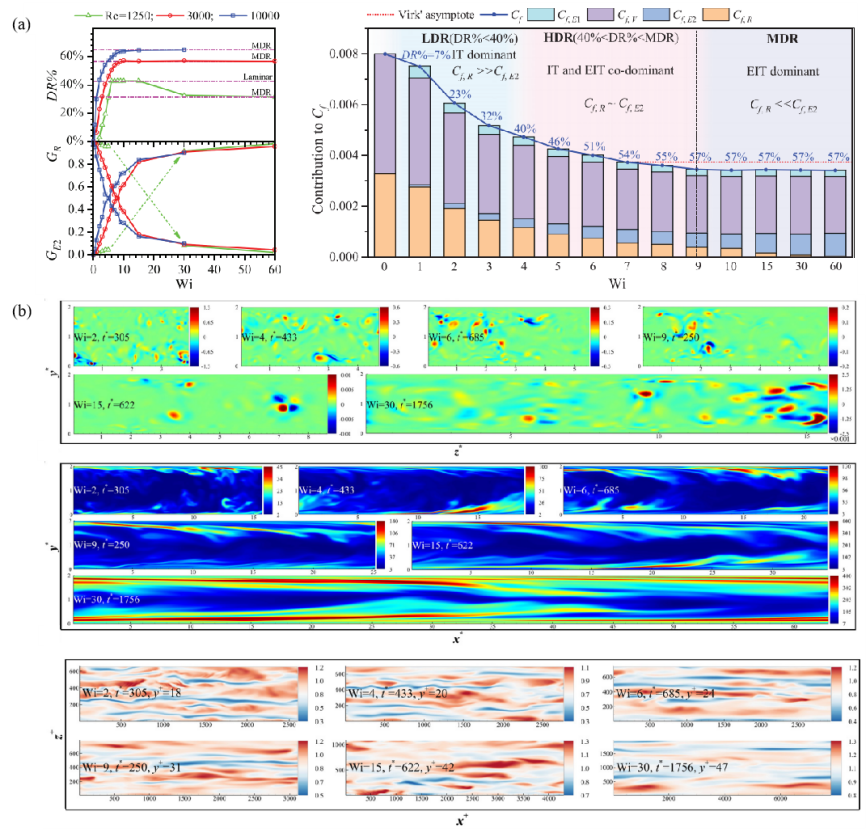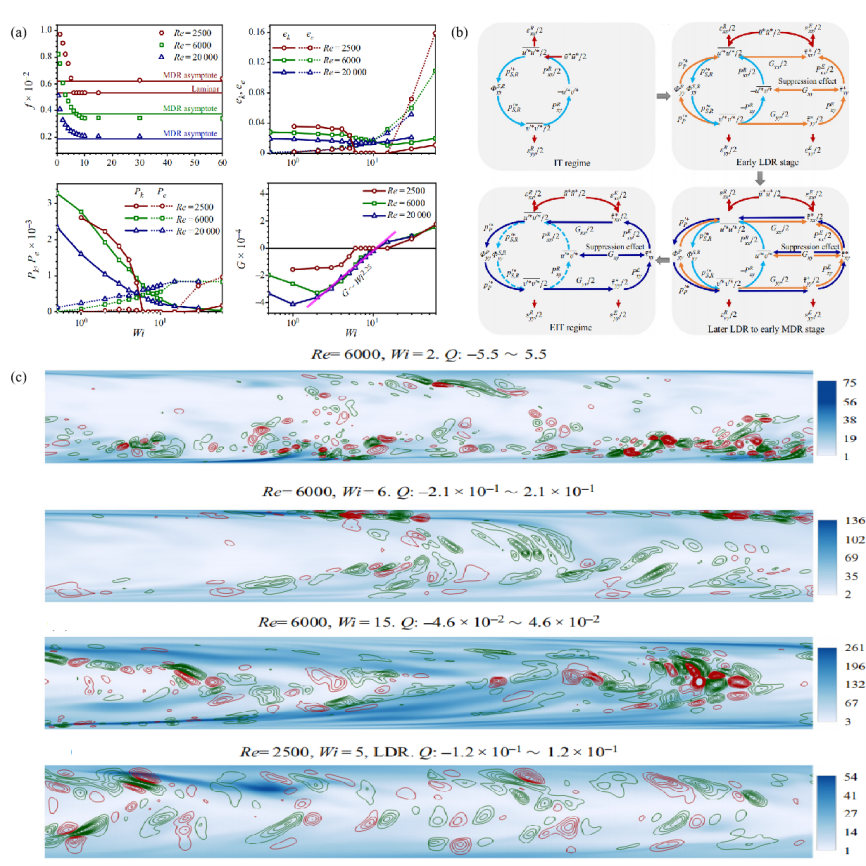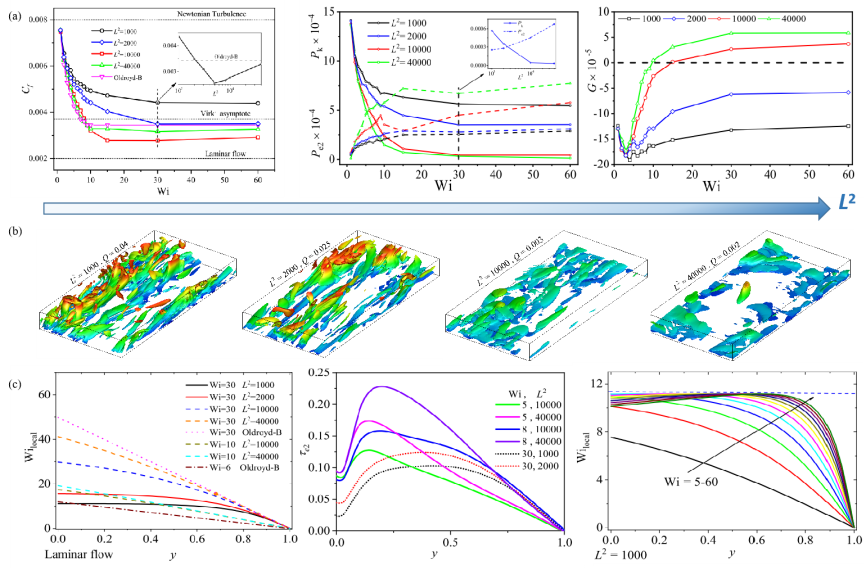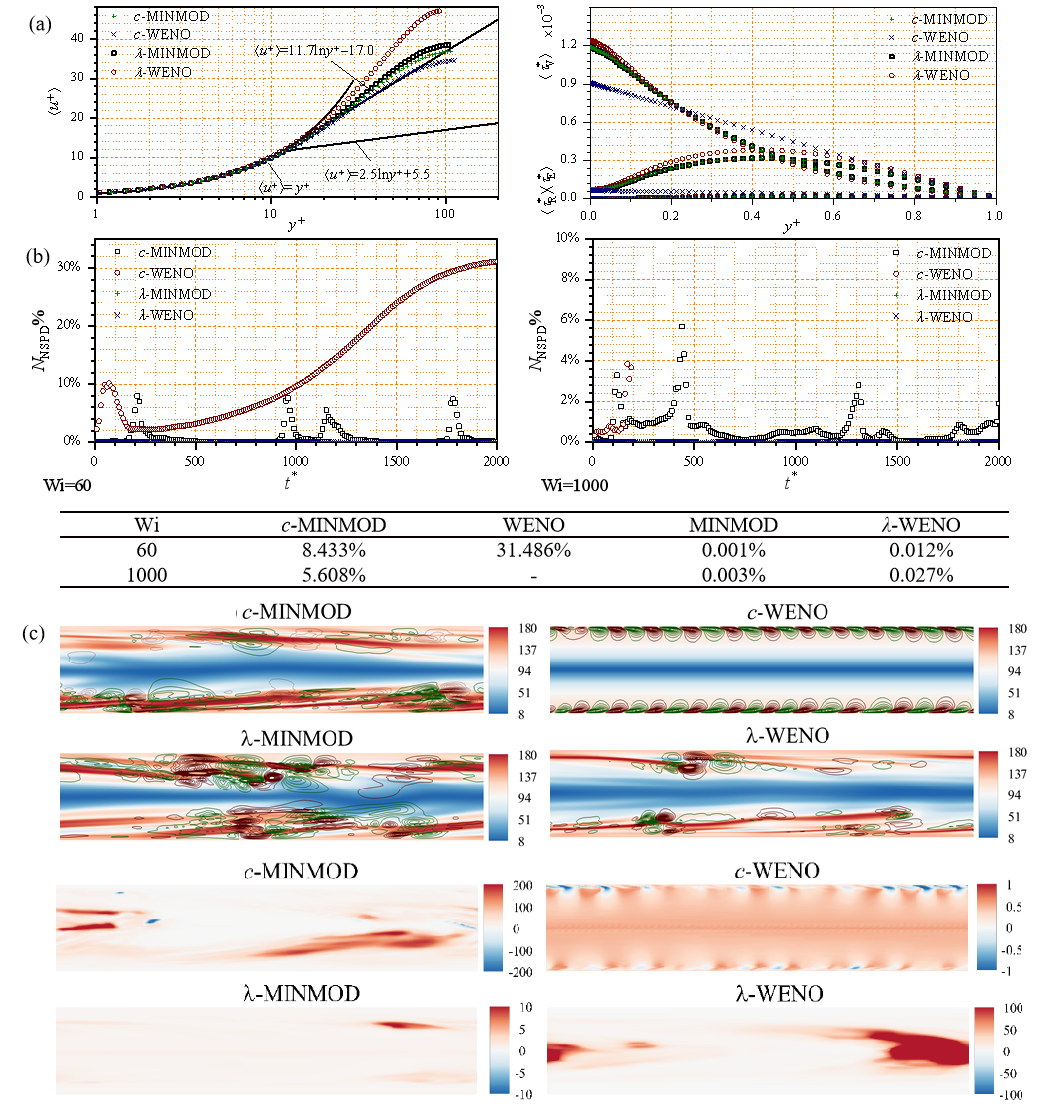Turbulence is an internationally-recognized problem in physics, mathematics and mechanics, which is also "the last unsolved important problem in classical physics (Richard Feynman)". During the understanding of the traditional Newtonian inertial turbulence (IT), new types of turbulent phenomena in the flow of viscoelastic fluid have been discovered and reported continuously, such as elastic turbulence (ET), elasto-inertial turbulence (EIT) and drag-reducing turbulence (DRT). It is necessary to reveal the mechanism of the turbulent phenomena and establish the corresponding theories in order to reach the comprehensive understanding of these new turbulence problem.
Recently, Professor Li Fengchen’s team from the School of Mechanical Engineering at Tianjin University has made significant progress in the field of viscoelastic fluid dynamics, whose achievements were published in the well-reputed journal “Journal of Fluid Mechanics” (JFM, which is owned by Cambridge University Press and is the leading international journal in the field of fluid mechanics.)and “Physics of Fluids”as letter (POF, “Letter” category: Letters are intended to address a topic of wide interest for which there is some urgency for an especially timely dissemination). Those papers are entitled as “Re-picturing viscoelastic drag-reducing turbulence by introducing dynamics of elasto-inertial turbulence” (JFM, 2022, 940, A31),“Maximum drag reduction state of viscoelastic turbulent channel flow: marginal inertial turbulence or elasto-inertial turbulence”(JFM, 2023, 10.1017/jfm.2023.151),“Role of elasto- inertial turbulence in viscoelastic drag-reducing turbulence” (POF, 2021,33, 081706) and “On the role of tensor interpolation in solving high-Wi viscoelastic fluid flow” (POF, 2023,35, 031708). Tianjin University is the first signatory of the above-mentioned papers, and Dr. Zhang Wenhua (Associate Researcher), Mr. Wang Suming (DC2), Zhang Hongna (Associate Professor) and Professor Li Fengchen are the first author or the corresponding author of those papers.
So far, there exists two fundamental problems in the research of viscoelastic turbulence: (1) no unified theory has been established for viscoelastic turbulence yet; (2) the numerical simulation of viscoelastic turbulence has been trapped by the high Wiesenberg number problem (HWNP). Targeting at these two problems, Professor Li Fengchen’s team has done a series of investigations.
In terms of viscoelastic turbulence theory, the research team proposed an innovative framework of analyzing the dynamics of elastic instability and inertial instability in DRT, and confirmed that there is a dynamic mechanism related to EIT dynamics in DRT long before the flow entered the maximum drag reduction (MDR, as shown in Figure 1) ,i.e., low-drag EIT mode formed near the channel wall at first, then rose gradually to the channel center and replaceed the dynamics of high-drag IT mode with the increase of fluid elasticity which can reduce the flow resistance. The link picture among DRT, EIT and IT was established from the perspectives of phenomenology, statistics and dynamics (as shown in Figure 2), and two effects types of the elastic nonlinearity were founded: modulating IT and introducing additional EIT, which resulted in two completely different drag reduction mechanisms. To illustrate the essence of the MDR state of viscoelastic DRT, the research team proposed an innovative concept of effective elasticity felt by the flow, based on which they clarified the current controversy on the essence of the MDR state (as shown in Figure 3),i.e., MDR state may be both marginal IT and EIT, and the effective elasticity felt by the flow played a decisive role in this process. The above results provide a new explanation of DRT mechanism and point out the direction for DRT model construction.
In terms of numerical method for viscoelastic fluid flows, HWNP has not been solved yet for more than forty years. The research team found that the error of tensor interpolation was the origin of HWNP. All of the existing tensor interpolation methods are based on component interpolation, which cannot guarantee the accuracy of tensor eigenvalues. To this end, they proposed a novel tensor interpolation method which owned essentially positive definite property. In the existing researches, the maximum Wi of the DRT simulation is only 60 after adding artificial viscous term, but their new method can achieve stable simulation with Wi as high as 1000 without adding any artificial viscosity (as shown in Figure 4). This work solves the HWNP fundamentally that has restricted the research of viscoelastic fluid flow for long and creates a new situation for the numerical simulation of viscoelastic fluid turbulence.

Figure 1 Role of EIT dynamics in viscoelastic DRT

Figure 2 Dynamical picture of visceolastic DRT considering EIT dynamics

Figure 3 The essence of MDR state of viscoelastic DRT

Figure 4 Numerical performance of the ESPD tensor interpolation method
By School of Mechanical Engineering
Editor: Sun Xiaofang






